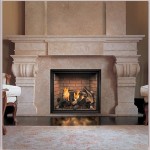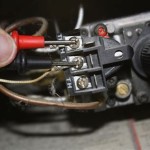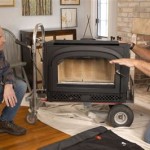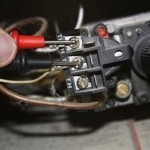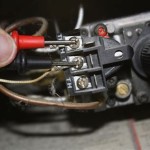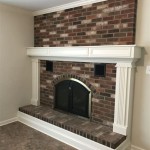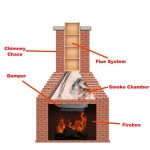Converting a Gas Fireplace to a Wood Burning Stove: A Comprehensive Guide
Converting a gas fireplace to a wood burning stove can be a rewarding project for homeowners seeking to add rustic charm and cozy warmth to their living spaces. This transition offers the opportunity to enjoy the crackling sounds and visual allure of a traditional wood fire while potentially saving on energy costs in the long run. However, it's essential to approach this conversion with careful planning and consideration for safety and compliance with local building codes.
Understanding the Conversion Process
Converting a gas fireplace to a wood-burning stove involves a comprehensive set of steps that go beyond simply replacing the gas burner with a wood-burning insert. The process typically involves:
- Assessing existing fireplace structure: This step includes evaluating the fireplace's size, chimney height and width, and the material used for the firebox. Assessing the structural integrity of the existing flue is crucial, as it needs to be able to handle the increased heat and combustion byproducts generated by a wood-burning stove.
- Installing a wood-burning stove insert: This step involves selecting a stove insert that fits appropriately within the existing fireplace opening and matches the desired heating capacity. The insert must be compatible with the existing chimney system and meet local building codes.
- Connecting the stove insert to the chimney: Ensuring a secure connection between the stove insert and the chimney is vital for safe and efficient operation. This may involve installing a new flue liner or modifying the existing chimney to accommodate the insert's requirements.
- Installing a proper firebox: Depending on the chosen stove insert, a new firebox may be required, either replacing the existing one or being built within the fireplace opening. This ensures that the stove insert is properly supported and sealed within the fireplace structure.
- Obtaining necessary permits and inspections: Before embarking on any conversion, it's crucial to acquire the necessary permits and inspections from local building officials. This ensures compliance with local building codes and safety regulations.
Key Considerations for a Safe and Effective Conversion
Converting a gas fireplace to a wood-burning stove involves several critical considerations that can influence the project's success and safety:
1. Chimney Evaluation and Modifications
The existing chimney plays a crucial role in safely venting the combustion byproducts from the wood-burning stove. It's essential to have the chimney inspected by a qualified professional to ensure it meets the requirements of the chosen stove insert. This may involve:
- Chimney size and height: The chimney must be of adequate size and height to provide sufficient draft for the proper combustion of wood.
- Chimney liner: Installing a new chimney liner is often necessary to accommodate the higher temperatures and increased combustion products from a wood-burning stove. The liner should be made of a fire-resistant material like stainless steel or clay.
- Chimney inspection: A thorough inspection of the existing chimney is essential to identify any potential problems, such as cracks, leaks, or obstructions that could compromise safety. A professional chimney sweep can help with this task.
2. Firebox and Stove Insert Selection
The choice of firebox and stove insert is critical for a successful conversion. The stove insert should be compatible with the size and configuration of the existing fireplace opening and chimney. It's also vital to consider the stove insert's heating capacity to ensure it can efficiently heat the desired space. Local building codes may dictate the type and size of stove insert that can be installed.
3. Ventilation and Safety
Adequate ventilation is crucial for safe operation of a wood-burning stove. The fireplace opening and surrounding area should be properly sealed to prevent the escape of smoke and gases. It's recommended to install carbon monoxide detectors in the home to monitor for potential hazards. Additionally, a fire extinguisher should be readily accessible near the stove in case of an emergency.
4. Professional Installation and Inspection
While some DIY enthusiasts may attempt the conversion themselves, it's highly recommended to hire a qualified professional for all aspects of installation. A skilled professional can ensure that the conversion meets safety codes, installs the stove insert securely, and properly connects the stove to the chimney system. Regular inspections by a qualified chimney sweep will help maintain the safety and efficiency of the wood-burning stove.
Embracing the Benefits of a Wood-Burning Stove
Converting a gas fireplace to a wood-burning stove can offer a range of advantages, including:
- Rustic charm and ambiance: A wood-burning stove adds a touch of traditional elegance and warmth to any living space.
- Cost savings: Depending on the local cost of natural gas and wood, a wood-burning stove can potentially offer cost savings, especially during peak heating seasons.
- Environmental benefits: Wood is a renewable resource, and burning wood can be more environmentally friendly than using fossil fuels.
- Improved heating efficiency: Wood-burning stoves are generally more efficient at heating a space than a gas fireplace. They distribute heat more evenly and can create a more comfortable and inviting ambiance.
Converting a gas fireplace to a wood-burning stove can be a significant undertaking but one that can offer numerous advantages. By following the steps outlined above and taking the necessary precautions, homeowners can enjoy the warmth and charm of a wood-burning stove for years to come.

Can You Convert A Gas Fireplace To Wood Burning Stove Direct Stoves

Converting A Fireplace To Wood Burning Stove Chesneys

Converting A Fireplace To Wood Burning Stove Chesneys

Gas To Wood Fireplace Conversion Overland Park Ks Firplace Service

Pin On S

Want To Convert Gas Wood Fireplace Full Service Chimney

Converting Open Fire To A Wood Burning Stove In Exeter

Convert Gas Fireplace To Wood

Want To Convert Gas Wood Fireplace Full Service Chimney

Wood Burner Conversion New Jersey Fireplaces Kjb
Related Posts

